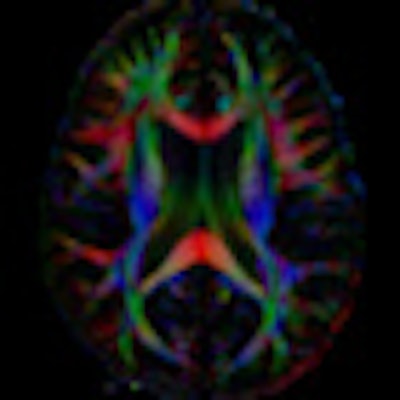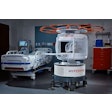
A California neurosurgeon is suing a division of multimodality vendor Siemens Healthcare, charging that the Malvern, PA, company has violated his patents for MRI technology, including diffusion tensor imaging (DTI) and nerve imaging.
Dr. Aaron Filler, Ph.D., and his firm NeuroGrafix of Santa Monica filed suit against Siemens Medical Solutions USA on March 18 in U.S. District Court for the Central District of California -- Western Division in Los Angeles. The lawsuit charges Siemens with violating Filler's U.S. Patent No. 5,560,360 for neurography, a term covering MRI protocols for nerve imaging, as well as scientific discoveries essential for DTI.
The lawsuit claims lost royalties and other income from MRI equipment sales, neurological and interventional procedures, and professional fees. Filler estimates the size of the market based on the '360 patent to be about $20 billion over the last six years; while the complaint does not specify a damage amount, it does ask for treble damages under U.S. patent law.
In addition to suing Siemens, Filler and NeuroGrafix claim that any clinician using DTI or neurography who isn't paying royalties is also infringing the patent. The claim appears to be even broader than that asserted by Dr. Raymond Damadian, the founder of MRI developer Fonar of Melville, NY, who successfully sued or settled with a number of MRI manufacturers in the 1990s over patents on MRI technology.
A 'revolution' in nerve imaging
The complaint filed in the case claims that at the time of the inventions covered in the '360 patent, there were no clinically satisfactory techniques for viewing structures such as the peripheral, autonomic, and cranial nerves due to their small size and proximity to other tissue of comparable size and shape. There were also no methods for feasibly visualizing the neural tracts that make up the white matter of the brain, according to the complaint.
The complaint goes on to state that Filler and the other inventors behind the '360 patent developed improved diffusion anistropy-based MRI techniques that could be used to image structures such as peripheral nerves, as well as anisotropic structures like neural tract tissue. The complaint states that the invention would "revolutionize" diagnostic and therapeutic techniques that require advanced knowledge of nerve and neural tract location.
Filler founded NeuroGrafix in 1998 to develop and market MR neurography products, applications, and services covered under the '360 patent. In 2003, the company sought funding to expand its network of locations conducting MR neurography, and to develop a series of image-based surgery centers using MR neurography and DTI for intraoperative guidance.
Filler met with Siemens executives that year, and the companies entered a mutual nondisclosure agreement (NDA) that included the '360 patent and other aspects of NeuroGrafix's business plan. In 2004 Siemens expressed an interest in the technology covered by the patent, the complaint states, and NeuroGrafix proposed that 500 intraoperative MRI scanners could be sold in the U.S.
The complaint goes on to charge that, while Siemens was in negotiations with NeuroGrafix, it was allegedly also in discussions with intraoperative MRI technology developer IMRIS of Winnipeg, Manitoba. The complaint charges that Siemens walked away from the NeuroGrafix talks without agreeing to license Filler's patent, and contracted instead with IMRIS and neurosurgical software developer BrainLab of Munich, Germany.
By August 2006, Siemens was promoting DTI as the "next generation" of imaging technology for neural pathways, the complaint states, and in 2007 the company was marketing MRI systems including a Neuro Suite application which included DTI capability. In 2009, the company was marketing MRI systems with its syngo DTI Tractography application, and the company provided instructions for performing DTI with its software, the complaint states.
A Siemens spokesperson cited corporate policy prohibiting comment on pending litigation.
Not the first case
The Siemens suit isn't the first case of Filler asserting patent claims in MRI. The Siemens lawsuit comes eight months after he secured $900,000 in an out-of-court settlement for infringement allegations against his former research colleague Dr. Jay Tsuruda and Oak Tree Medical Center, a Pasadena, CA, imaging service where he practices neuroradiology.
 |
| Color-coded orientation map of a human brain calculated from diffusion tensor imaging. Each pixel contains information about the eigenvector (color) and amount of diffusion anisotropy (intensity) that summarize the information contained in the 3 x 3-matrix tensor. Image courtesy of the National Institutes of Health. |
According to Filler, MR was unsuitable for nerve imaging until he and collaborators invented methods capitalizing on then-new phased-array, fast gradient coil, and fat-saturation pulse-sequence technologies that made peripheral nerves light up against a background of darker surrounding tissue.
The '360 patent grants its holder rights over all MR equipment, medical imaging, and processing techniques that make peripheral nerves, cranial nerves 3 through 12, and autonomic nerves appear at least 1.1 times brighter on MRI than surrounding nonneural tissue.
Tsuruda and Wycoff settled the case in June 2009 after their attempt to invalidate the patent failed. At the time, they predicted that their situation would serve as a test case leading to broader claims against MR manufacturers and clinical imaging services.
Tsuruda predicted the case could lead to legal problems for every radiologist who performs T2 fat-saturation or short-tau inversion recovery (STIR) imaging that inadvertently lights up peripheral nerves. Wycoff believes that the patent terms are broad enough to cover every MRI scanner in the U.S.
Other firms at risk?
Indeed, recent developments suggest other equipment manufacturers and MRI users besides Siemens are at risk. In December 2009, NeuroGrafix warned selected customers of IMRIS that they cannot use DTI software developed by Siemens for the company's intraoperative MRI systems without first obtaining a license for the Filler patent. The infringement warning was also posted on the NeuroGrafix Web site.
IMRIS has an OEM agreement with Siemens covering MRI system components for iMotion, a ceiling-mounted surgical imaging system that performs intraoperative anatomic MRI, DTI, and tractography.
Filler claims he has also discussed possible licensing arrangements with GE Healthcare of Chalfont St. Giles, U.K.; Philips Healthcare of Andover, MA; and Toshiba America Medical Systems of Tustin, CA.
Though the Oak Tree case focused solely on neurography, Filler's claims against Siemens involve DTI as well. The technique has shown promise for evaluating amyotrophic lateral sclerosis (ALS), Alzheimer's disease, autism, epilepsy, multiple sclerosis, Parkinson's disease, and spinal cord injuries. DTI is an important research tool for evaluating white matter disease, behavioral disorders, and brain development.
Who invented DTI?
The DTI claim of the litigation could evolve into a separate battle over who invented the technique. U.S. National Institutes of Health (NIH) scientists Peter Basser, Ph.D., and James Mattiello, Ph.D., and French researcher Dr. Denis Le Bihan jointly filed and were granted a patent for DTI in the same period from 1992 to 1996 during which Filler and the University of Washington group patented their inventions.
In a history of computed imaging posted in July 2009 at Nature Precedings, Filler wrote that his 1992 patent covered all of the primary steps for performing DTI and tractography, including a 3D measurement scheme that tracked the direction of diffusion, permitting its color-coded presentation.
But research by Basser and colleagues has been more generally recognized by the medical imaging community for laying the groundwork for DTI as it is now performed. Those efforts earned Basser a gold medal award from the International Society for Magnetic Resonance in Medicine in 2008.
In a phone interview, Basser dismissed Filler's claim to DTI. Filler's patent did not influence the subsequent development of DTI because of problems with his mathematics and experimental design, he said.
"From what I saw of the patent they filed, they don’t explain the underlying mathematics or physics that relates the tensor to the measured quantities," Basser said. "It doesn’t lay out an experimental design that tells you how to measure the tensor. It doesn’t tell you what to do with the tensor information once it is collected or what kind of useful information it provides. It couldn’t teach the technology and did not affect my work in the field."
Dr. Susumu Mori, Ph.D., whose work has led to substantially improved tensor measurement and presentation, did not retrace the steps outlined in Filler's patent as described in Filler's history. In an interview, Mori said his research was inspired by the early work of Dr. Michael Moseley at Stanford and more recent discoveries on the NIH campus at Bethesda, MD, by Crit Moonen, Ph.D.; Peter van Garderen, Ph.D.; and Peter C.M. van Zijl, Ph.D.
Echoes of Fonar?
In a written response to questions, Filler saw similarities between his case against Siemens and Damadian's successful patent infringement suit against GE in the 1990s. Damadian was awarded $128 million for GE's infringement of patents covering multiangle oblique imaging and the use of T2 decay times to diagnose cancer. The Fonar CEO also generated royalties and out-of-court settlements with other MRI vendors.
Both cases involve major, fundamental advances in the use of MRI, according to Filler. He argued that the neurography and diffusion anisotropy imaging patent provides for broad categories of imaging that have compelling medical utility and that are now driving MRI sales, providing irreplaceable life-saving clinical benefits to patients.
"A broad basic patent, such as ours, sets the agenda and cannot be circumvented," Filler wrote.
By James Brice
AuntMinnie.com contributing writer
May 18, 2010
Related Reading
NeuroGrafix claims IMRIS patent infringement, December 21, 2009
NeuroGrafix settles patent dispute, June 26, 2009
Copyright © 2010 AuntMinnie.com


.fFmgij6Hin.png?auto=compress%2Cformat&fit=crop&h=100&q=70&w=100)





.fFmgij6Hin.png?auto=compress%2Cformat&fit=crop&h=167&q=70&w=250)











